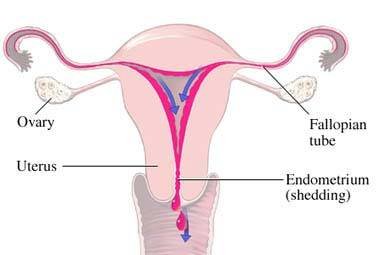What is Amenorrhea?

Menstruation is a natural monthly cycle that every woman goes through from an average age of 12 upto 51 years. During mensus or periods, as commonly called, a woman sheds the uterine lining. Women do not get their periods either during pregnancy, breastfeeding or post-menopause. Apart from these reasons, if still, a women’s menstruations are absent, then she may have amenorrhea. Thus, amenorrhea is a condition of the absence of a menstrual period.
There are two types of Amenorrhea:
Primary Amenorrhea:
Primary amenorrhoea is a condition when a girl does not get her first period by 16 years of age and lacks secondary sexual characteristics like breast development, etc.
Secondary Amenorrhea:
A condition when a woman stops menstruating for about six months without apparent reason like pregnancy, breastfeeding or post-menopause.
What are the symptoms of Amenorrhea?
The common symptoms of Amenorrhea:
- Absence of menstruation
- Lack of breast development
- Facial hairs
- Vaginal dryness
- Milky discharge from nipples (Galactorrhoea)

What causes Amenorrhea?
Different types of amenorrhea are caused due to different reasons:
Causes that lead to primary amenorrhea are:
- Family history of delayed menstruation (Hereditary)
- Genetic disorders like Turner’s Syndrome (where the girl is born with only one sex (X) chromosome
- Congenital like Mullerian defects (abnormal womb), etc.
Causes that lead to secondary amenorrhea are:
- Physiological (Natural) Causes
- Pregnancy
- Breastfeeding (Lactational amenorrhoea)
- Menopause
Pathological Causes:
- Using birth control methods like Depo-Provera etc.
- Stopping the use of birth control pills
- Stress and depression
- Low body mass index (BMI)
- Heavy exercise or sports
- Certain psychiatric drugs
- Long-term illness
- Underactive thyroid
- Formation of scar tissue in the uterine cavity (Asherman’s syndrome)
- Pituitary tumours - prolactin-secreting tumours
How does the doctor diagnose Amenorrhea?
Doctors at Maa Nursing Home and NetraJyoti Eyecare Centre diagnose amenorrhea with:
- Physical Check-up
- Asking Medical History
- Blood tests to check the hormone levels
- Ultrasound (sonography) of the pelvic region to check for any anatomical abnormalities
- X-Ray to check for any bone fractures
What are the treatment options available?
Once the doctor diagnoses the cause, treatment is planned. If there are no anatomical abnormalities detected, the doctor shall treat with a combination of the following:
- Hormone Replacement Therapy
- Medicines
- Lifestyle changes
- Proper diet
- Moderate exercise regime
If there is an anatomical defect, the doctor shall suggest surgery for correction.